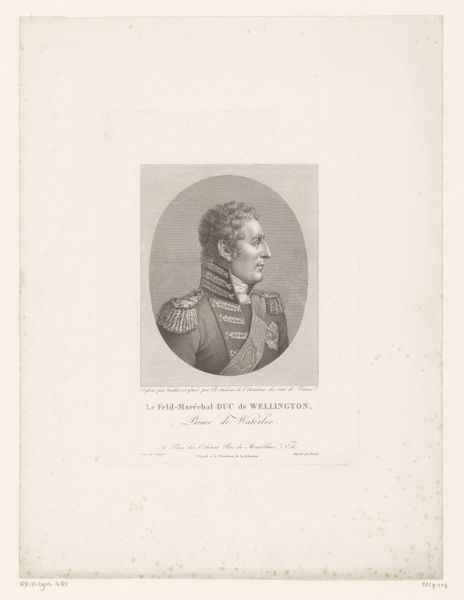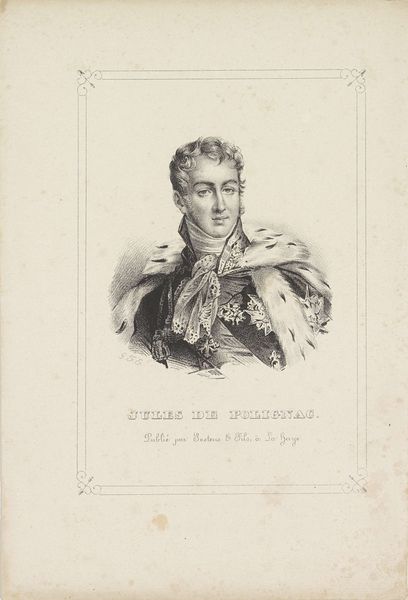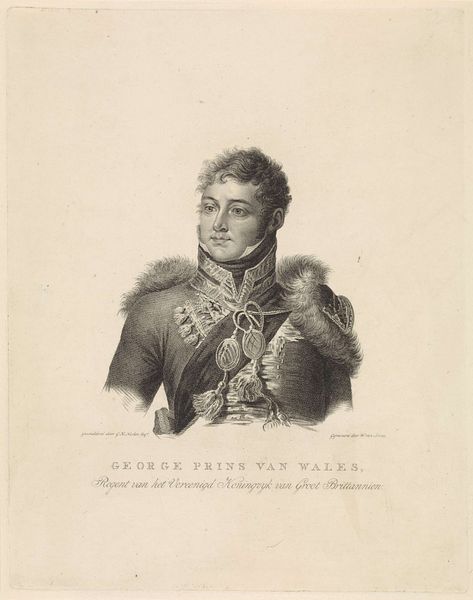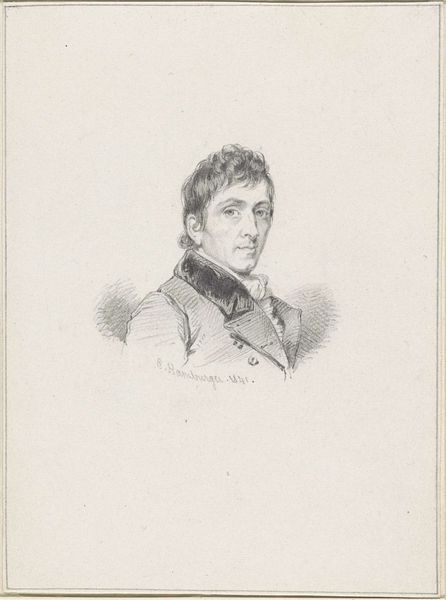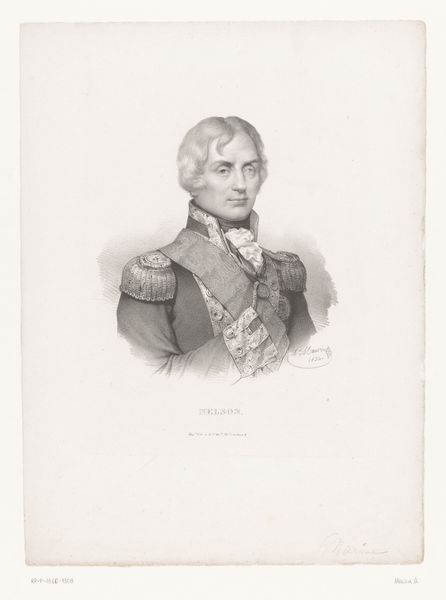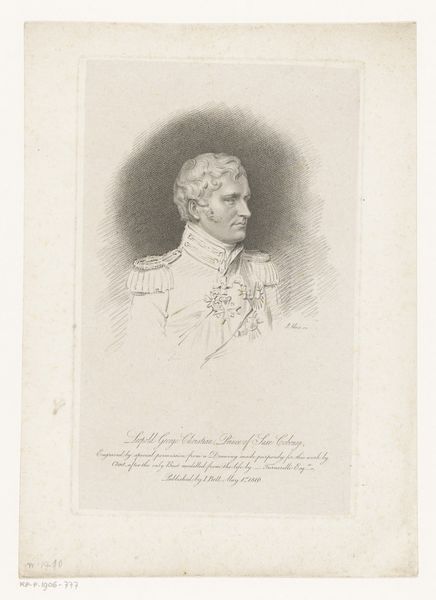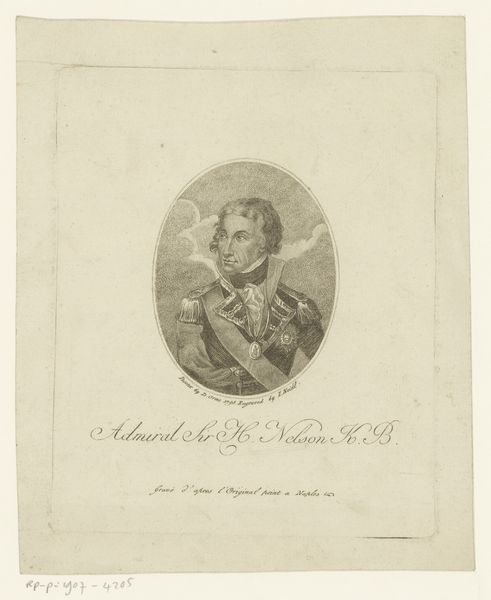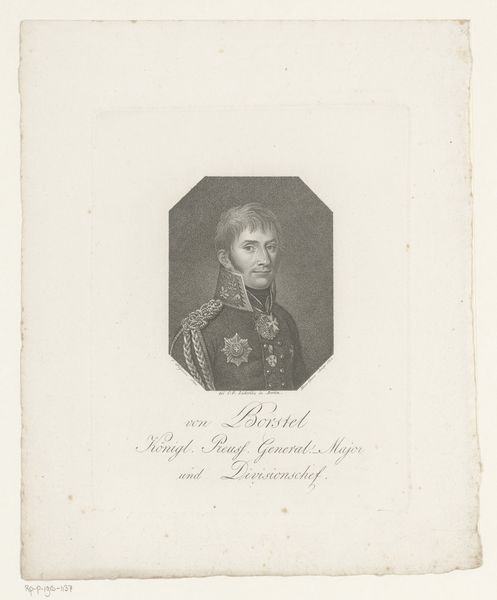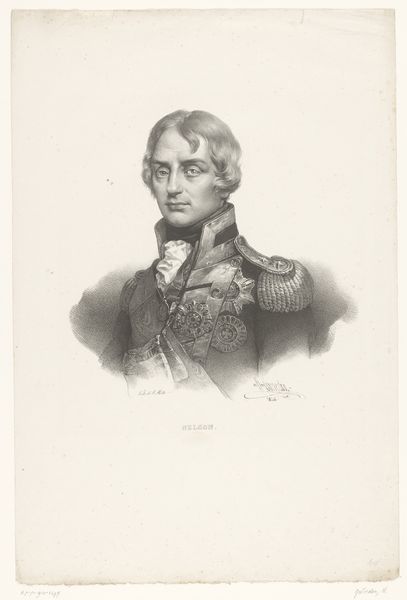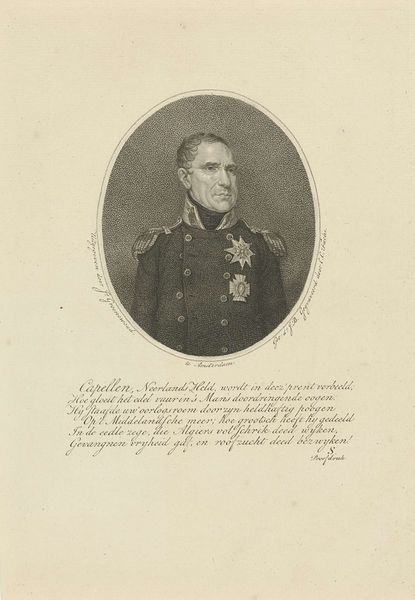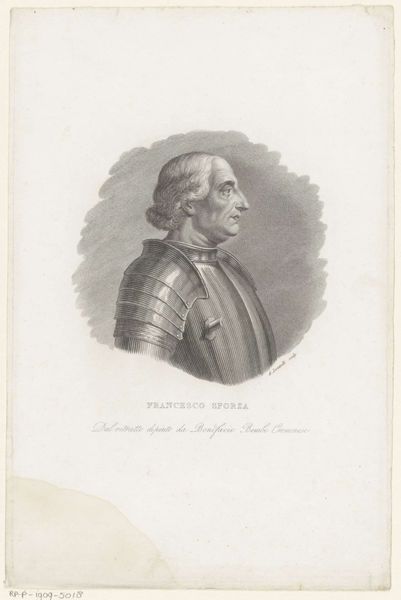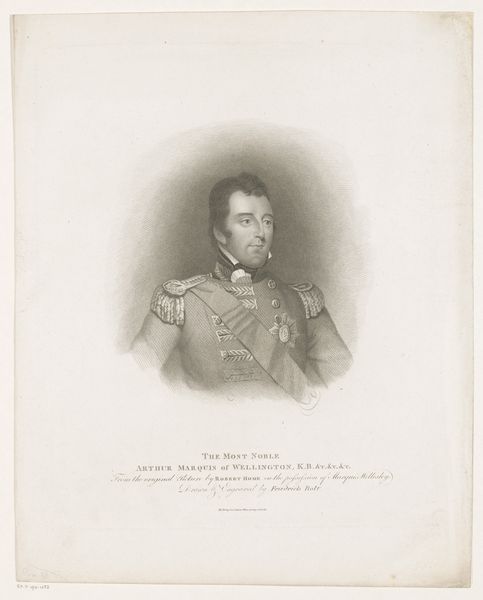
drawing, graphite, pen
#
portrait
#
drawing
#
pencil sketch
#
pencil drawing
#
graphite
#
pen
#
academic-art
#
graphite
#
realism
Dimensions: height 220 mm, width 155 mm
Copyright: Rijks Museum: Open Domain
Curator: This portrait, dating from around 1838, depicts Charles Ferdinand, Duke of Berry. It is credited to Gerhardus Fredericus Eilbracht and crafted using graphite, pen, and pencil. Editor: Immediately, I get a sense of… constraint. All those tightly rendered lines, the formal attire… It feels like an image meant to project an image of unquestionable authority. A beautiful image though, isn't it? The layering is quite masterful. Curator: The meticulous detail undoubtedly conveys authority. The clothing acts almost as armor. In its historical context, this meticulousness mirrors a societal emphasis on order after revolutionary upheavals. Think of it in light of post-Napoleonic Europe, where reinstating legitimacy was paramount. Editor: So, portraiture as a PR exercise, basically. I mean, look at the elaborate collar! I wonder if he ever accidentally stabbed himself with it? Did status outweigh comfort back then? Curator: It was very much a performance. This rendering, created after his assassination in 1820, sought to recast him as a martyr for the Bourbon cause, so his attire is less a matter of personal choice and more about reinforcing an inherited right to rule. Editor: Martyrdom, huh? Talk about spinning a narrative! Though you have to admit, Eilbracht does create such compelling light and shadow, that even his collar seems touched by the divine. I keep getting drawn in by how such detail could be captured, it makes me itch to reach for my own pencils! Curator: Indeed, his artistic choices contributed to solidifying this image as propaganda. That’s a critical reading often overlooked in favor of purely aesthetic appraisals. His identity had a very fraught legacy as a rallying symbol for the Ultras post-mortem, making these seemingly benign images far from innocent. Editor: Fascinating. I'm so fixated on the details that I miss that layer. So, looking beneath the surface reveals so much more about the era than his clothes do! Curator: Precisely, paying attention to social context shifts this from just an attractive period piece into an entry point to understanding the complex interplay of power, representation, and memory. Editor: Thanks, I see this portrait so differently now. Curator: As do I! Thank you!
Comments
No comments
Be the first to comment and join the conversation on the ultimate creative platform.
